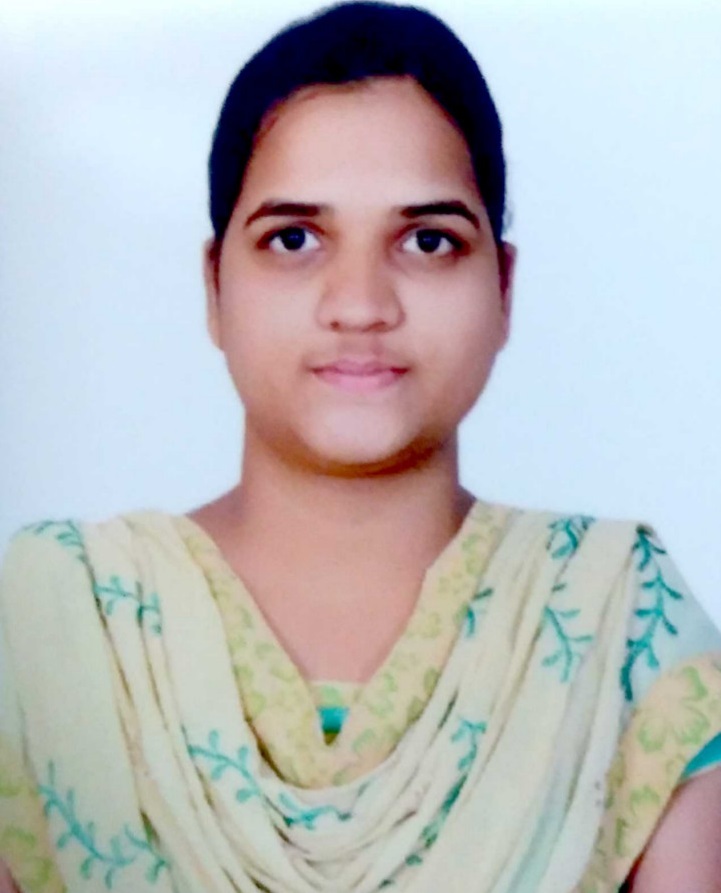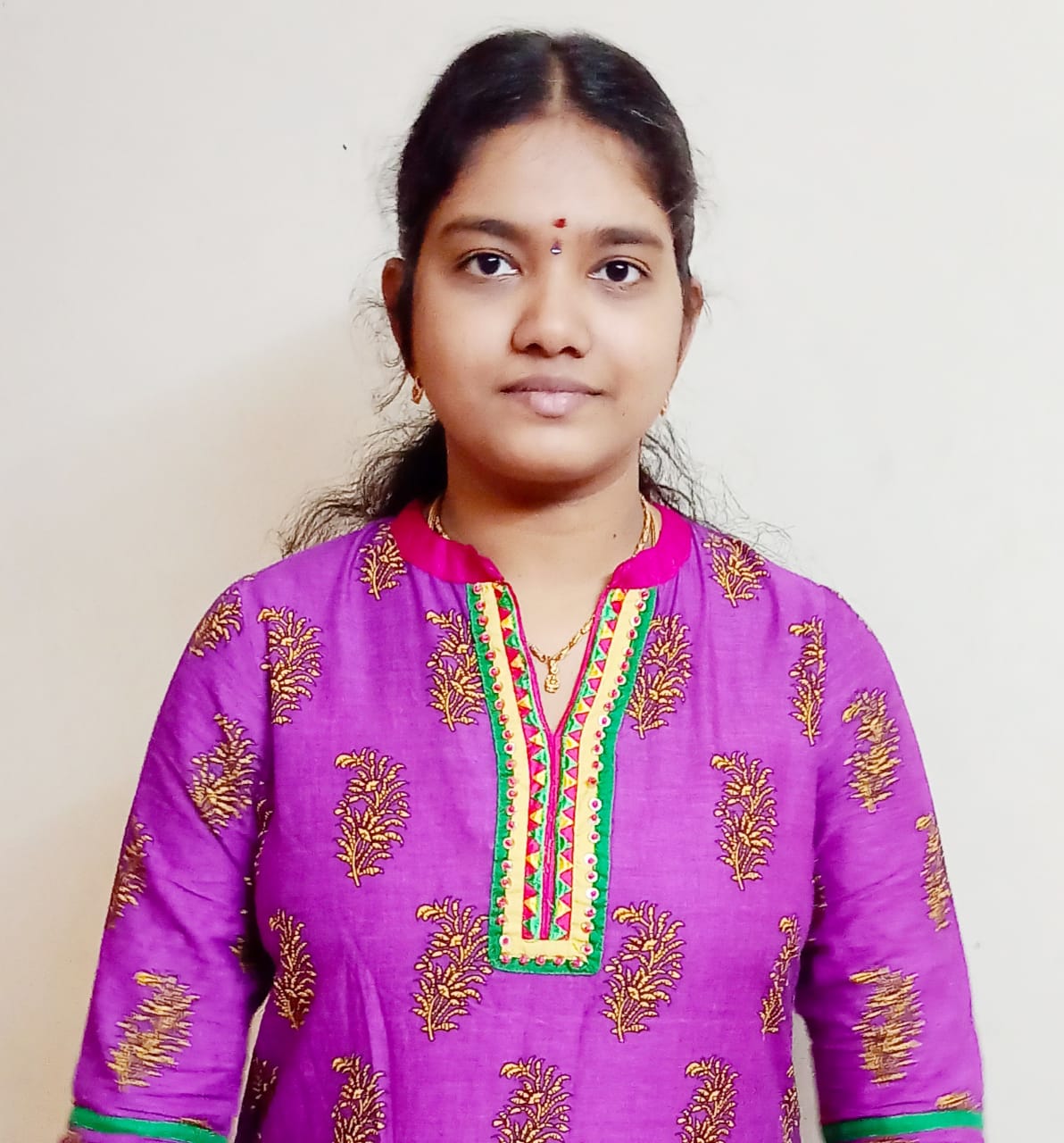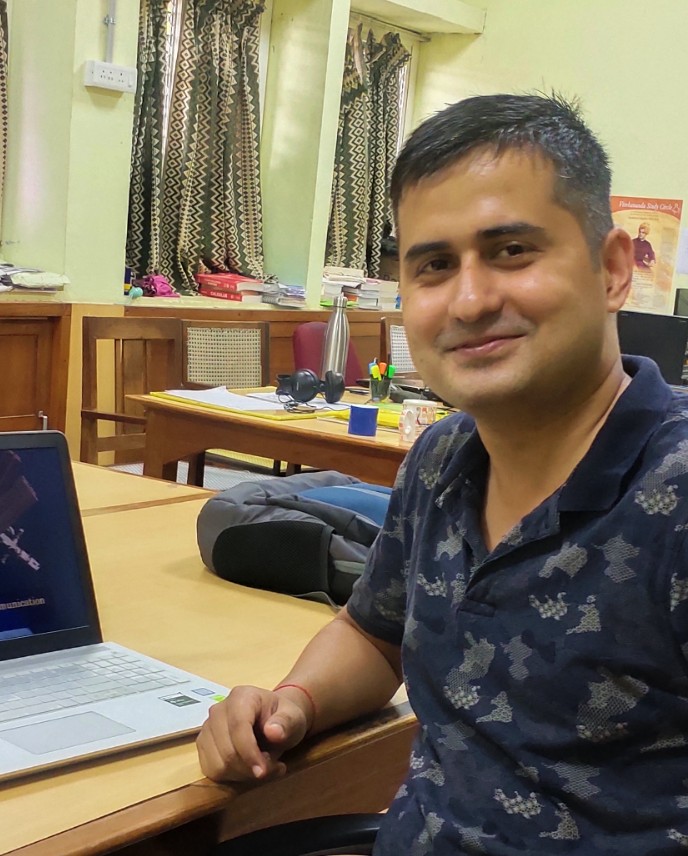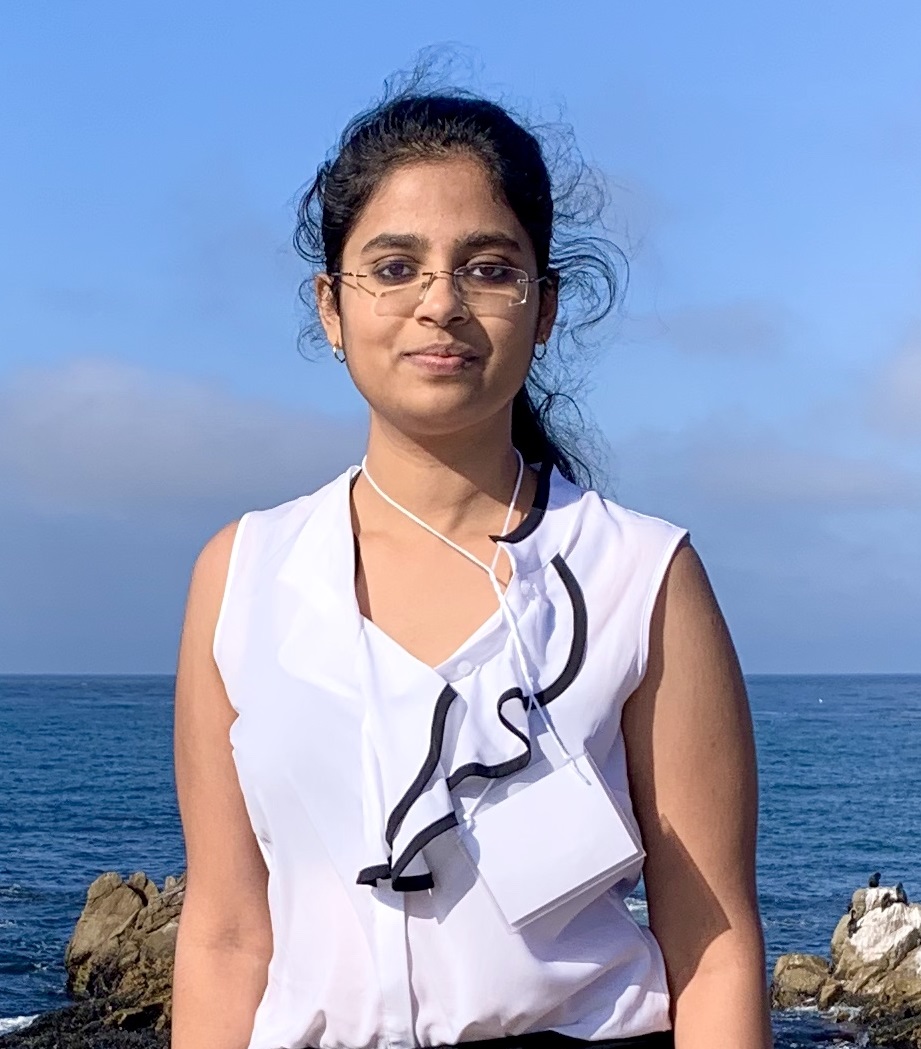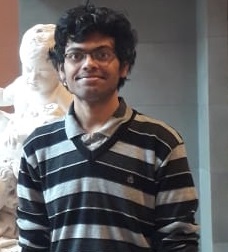Projects in the Group
Highly Efficient and Reliable One way Communication Link (HEROC)
The scope of this project is to design 5 (five) one-way wireless links which could sometimes have multipath delay spread when encountering near Line of Sight (LOS) channels between the terrestrial base-station receiver and the aerial transmitters. The Objective is to design and develop multiple independent one way wireless links with a common receiver to decode the signals from the independent transmitters. These links are half duplex in nature and there is no feedback from the ground to the airborne transmitters. It is required to design waveforms which can handle multiple half duplex links without any common signalling across the transmitters. This work is done in collaboration with Aeronautical Development Agency(ADA), DRDO.Team Members
Multi-Operator Spectrum Sharing
The TelWiSe group is implementing a hardware testbed to demonstrate a novel non-orthogonal spectrum sharing technology which is expected to be part of the 5G evolution towards 6G. Here, up to 4 mobile broadband operators can simultaneously use the same spectrum in the same region, without any loss in per-operator throughput.This Multi Operator (MO) version of Broadband Access for Spotless Inland Coverage (BASIC), can drastically reduce the cost of spectrum ownership to each operator, even while ensure excellent coverage both on the downlink and uplink. A Single Operator (SO) version of BASIC is also being developed, which can provide >95% geographical coverage even while ensure minimum downlink rate of 5Mbps per user, and minimum uplink rate of 2Mbps per user. Also, a new windowed OFDM/OFDMA waveform with many advantages when compared to conventional OFDMA as well as other 5G waveforms such as WOLA, FBMC, and UMC, has also been designed by our group.
Team Members
VERSACOMM with High Speed Frequency Hopping

VERSACOMM is a indigenous SDR platform design and development effort to enable fast implementation of various custom air interfaces for strategic communication. As part of the Physical Layer Algorithms team in this project, we have designed several custom air-interfaces for various specific system requirements. One of them is a high-bit rate link can hop faster than 5000 hops/sec, which makes it jammer-proof. The group has also designed a 2000 hops/sec system with higher bit-rate, as well as a low-latency MANET system which is resilient to single-point failure. This work is being done in collaboration with Defence Electronics Application Laboratory (DEAL), DRDO.
Team Members
Reliable and Covert Sat-Com (RCS)

The RCS project is a cutting-edge air-interface where the primary objective is to design a covert (low probability of detection) point to multipoint wireless communication system with a country-wide coverage ability. A geo-stationary communication satellite transponder is used as a relay (i.e., using the bent pipe principle for amplifying the received signal, frequency translation and forwarding). To meet the design specifications, generalised multi-carrier schemes (different choices for the forward link and for the reverse link) with required correlation properties and low PAPR are designed for this FDD system. This project also involves implementing a lab-scale hardware demonstrator bringing out the key aspects of the design, in real-time. This work is being done in collaboration Defence Electronics Application Laboratory (DEAL), DRDO.
Team Members
Helicopter Satellite Communication Systems (HSCS)
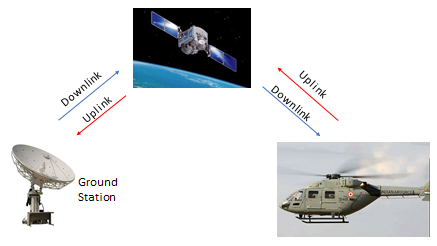
The objective of the project is to design an air interface for the communication between a helicopter and satellite, where the transmission channel is periodically blocked by the rotor blades of the helicopter. The design of both uplink (Heli to Sat) and downlink (Sat to Heli) involves a unique time diversity based single carrier block modulation with cyclic prefix. It provides highly reliable, power and bandwidth efficient link design.
This design has low PAPR for both links and results in a computationally simple receiver-side processing. Appropriate sync symbols are used at the start of every slot in a frame which provides phase tracking and the ability to locate the blockage location in the received frame. This work is done in collaboration with Central Research Labs, BEL (www.bel.co.in).
Team Members
Low Overhead Equalization for MANET Links
Mobile Adhoc NETwork (MANET) links are bursty, and therefore only allow very low overheads for synchronization and channel estimation (and/or equalization). We consider a MANET scenario where the bursty single-carrier links encounter multipath induced fading and delay-spread. Presence of high Doppler spread makes equalizer training and tracking crucial in order to maintain a low mean square error (MSE) in the estimation process.We have designed an estimation scheme which is robust to high Doppler spreads and can simultaneously accommodate very short training periods. This computationally efficient equalizer estimation scheme can work for fractional spaced equalizers without any explicit matrix multiplication (as needed in the symbol-spaced case). This single carrier link now has an equalizer training scheme with a computational complexity lower than conventional Least Mean Squares (LMS) algorithm, while having a MSE convergence performance superior to the conventional Recursive Least Squares (RLS) algorithm. Also, our scheme is robust to timing and frequency synchronisations errors. This work is done in collaboration with Central Research Labs, BEL (www.bel.co.in).
Team Members
Radio On The Move (ROTM)
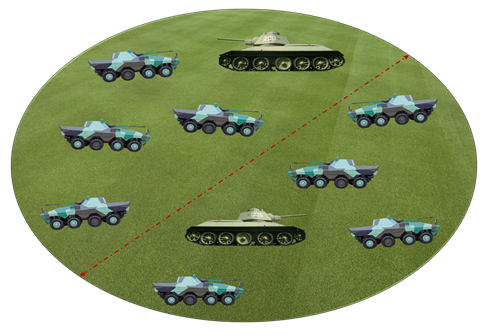
The objective of this project is to design a multi-point to multi-point air interface for strategic data and voice sharing within a set of mobile platforms. This work combines different communication techniques such as TDMA for orthogonal multiple access, block modulation for mitigating multipath, frequency hopping (FH) for anti-jamming, and low complexity PHY layer encryption.
One elegant aspect of our design is the usage of a random shift-register state based preamble which enables all the nodes to communicate with each other with a FH rate of more than 1000 hops/sec. The unique preamble and waveform designs gives the benefit of realizing a FH system with long hopping sequences even while enabling the valid nodes to rapidly acquire (or re-acquire) the hopping pattern. This work is done in collaboration with Central Research Labs, BEL (www.bel.co.in) and CEWiT (www.cewit.org.in).
Team Members
Datalink for Ground to Air Communications

The objective here is to design and develop a secure two-way data link communication system between ground station and a possibly manoeuvring airborne receiver. Block modulation technique is exploited here to overcome the difficulties in the links between fixed platforms and ultra-sonic airborne platforms. The user data symbols are spread with Walsh codes, to enable multiple access as well as LPI/LPD capabilities (MC-CDMA).
The elegance in the design is that one ground station can support users who belong to other ground station in the event of node failure without any reduction in the throughput per user. Also, the rate of change of Doppler can be accurately tracked. This work is done in collaboration with Central Research Labs, BEL (www.bel.co.in) and CEWiT (www.cewit.org.in).
Researcher
Block Modulated Strategic Communications (BMSC)
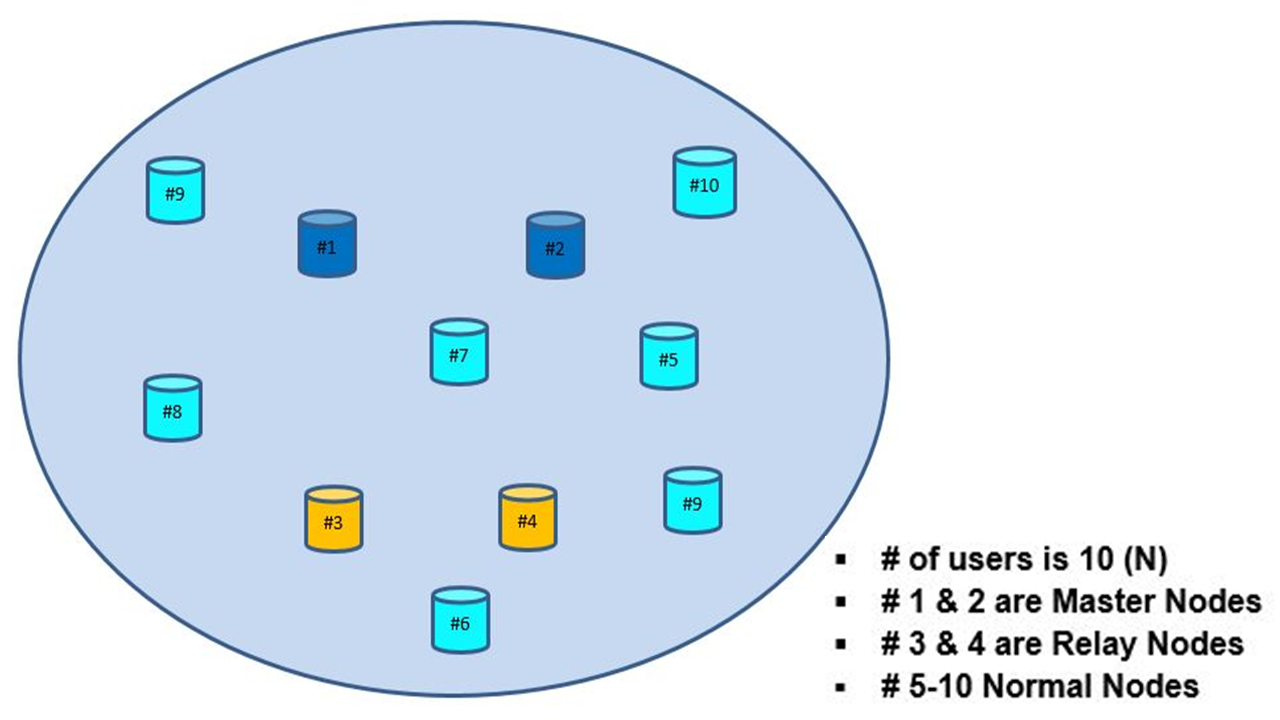
In this project, a FDD-based air interface was designed for secure communications between ships. This is a narrow-band solution providing low bit-rates but over highly reliable links. The proposed design uses filtered-OFDM (completely asynchronous block modulation), an unique word correlation method for timing estimation, and a novel ultra-low complexity error correcting code (MPCC). It also ensures rapid signal acquisition time during both cold start and tracking modes. This work is done in collaboration with Central Research Labs, BEL (www.bel.co.in).
Other projects with Industry
Over the last decade or so, our research group has also been funded by various industries for research projects in topics such as “Multimode Receivers”, (NXP Semiconductors Inc.), “Rate Adaptation in Interference Channels”, (Nokia Mobile Division), “Robust Detection”, (Qualcomm Inc.), and “High Capacity Radio Relay” (Data Patterns [India] Pvt. Ltd.).Dr.K.Giridhar
Professor
Department of Electrical Engineering
Indian Institute of Technology, Madras
Room:ESB-344B
Dir:+91 (44) 2257 4420
Off:+91 (44) 2257 4408
Fax:+91 (44) 2257 0120
Email: k.giridhar@telwise-research.com

Administrative Assistant .
Nandhini R
Department of Electrical Engineering
Indian Institute of Technology, Madras
Phone:+91 (44) 2257 5405
Email: nandhini@telwise-research.com
Website inspired by
Jamison Research Group
Website developed and maintained by Sweta, Sruti, Arunesh, Sowmya and Surendar.








